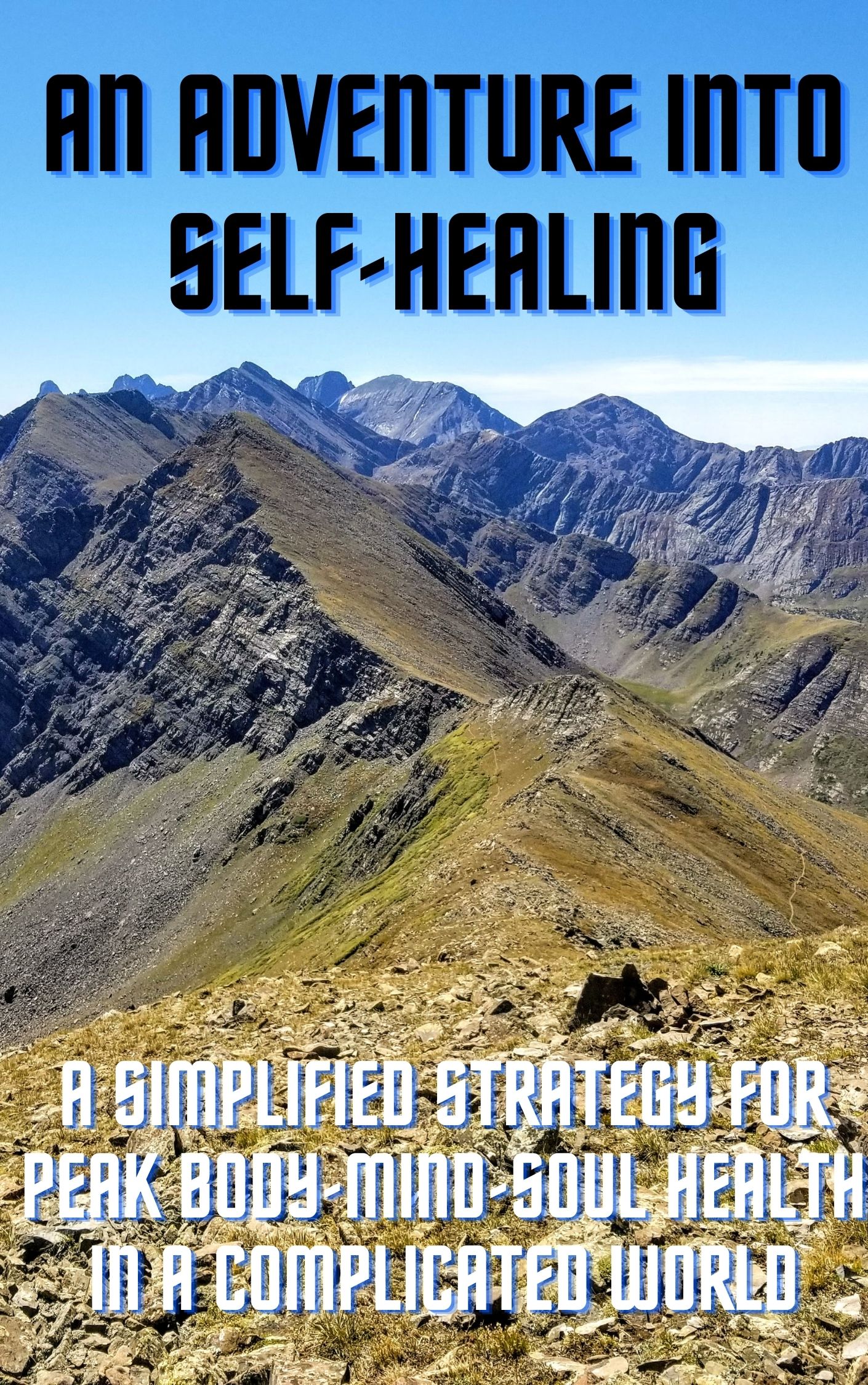Way ~ Through Your Body!
- Home
- Body Window ~ Expanded
- What Is a Metaphor
What is a Metaphor, and Why is it Important?
’God bless the roots! Body and Soul are one.’ ~ Theodore Roethke
What is a metaphor? Good question. It seems that the term is thrown around a lot, especially on this website! And especially when used in the Body Window, the body and the body’s parts are frequently referred to as metaphors. I hope to fully answer the question on this page, on ‘What is a metaphor?’
When looking at metaphors, it may be easier to understand if viewed as a figure of speech. It is an expression that is used to denote something, not from a literal meaning, but a similar, figurative meaning. It is using symbols in place of reality. We use metaphors and symbols in the English language every day.
The Body Window's Self-Guided Healing Course is Now Reduced to only 19.95 USD!
Click here to learn more about how this healing course can change your life!
A great example is when we say, 'I ran around town looking for the perfect pair of shoes.' Did you literally run with the use of your legs from store to store, several miles apart, or is it a figure of speech to show that you were busy going from one place to another?
If you say, ‘I froze in my tracks,’ do you mean that
you actually froze to death standing in place, or did you become
totally still because you were paralyzed by fear? If you stop and think
for a minute, knowing what a metaphor is can be understood. I am sure
that you can think of many metaphors, especially body metaphors that use
figurative language.
Poetry and entire novels can get very creative in their use of metaphors and symbols, to provide parallels of meaning in a non-literal way.
The use of metaphors by authors is a way for them to illustrate a point without coming right out and saying it. It is a tool used to get you to really think about something, to find new meaning in it and to see it from a different angle. It is a way to have the reader enter a different sphere, a different way of thinking. When we ponder on what a metaphor is, we realize that metaphors are tools to tell a story.
The use of metaphors is also a method to teach you something at a deeper level. The use of metaphors also helps an author illustrate a point in the language of the everyday, the language of the vernacular.
We all understand what ‘running around town’ means, and ‘freezing in our tracks.’ When we explain phenomena in figures and symbols, it affects us at a deeper, and often more emotional level. The 'gut level.' (Another metaphor - I just can't help myself!)
A great modern day example of what is a metaphor is found in the movie by Robert Redford, The Legend of Bagger Vance. The game of golf is used as a metaphor for life.
Will Smith plays Bagger Vance, and his character he plays is a god metaphor. The actual name, Bagger Vance may even have a mythical Hindu-God meaning. A very interesting story to teach you something about life and your role in life.
The character that represents a god metaphor in a story is usually pretty easy to spot. It is the figure that is all knowing, all-powerful and often the mysterious figure in the story.
Since most of us have a concept of God, it is a metaphor that shows up often in stories. The same is true of good versus evil. This metaphor has many faces and is seen everywhere.
There are many more metaphors in many stories. Science fiction stories are usually loaded with metaphors. Just think of Avatar, Lord of the Rings, Alice in Wonderland and many, many more.
The story is better with the use of metaphors, isn’t it? They strike a chord with us and bring the story more meaning. These metaphors represent the collective human experience.
What is a Metaphor, Defined
So what is a metaphor? A metaphor, most simply tells a story which parallels actuality or actual life. It tells a story without actually coming right out and giving the actual events. The parallels to actual life may not be obvious at first, but requires thinking about it.
Look at the picture of the tree below. What metaphors about life can you think of regarding this tree?
The metaphors that come to my mind, are
- I bend to the weather, yet still stand tall and strong.
- My roots are planted in the Rock.
- Though Life may twist me, I live life well-grounded.
I am sure you can think of many, many more.
Another reason that metaphors are important to us is that the expressions that we use are part of our cultural consciousness, formed over the course of time.
When we say that we ‘eat our heart out’ or ‘feel it in the gut,’ everyone knows what the phrase means. It is a collective conscious understanding that when something bothers us, we have actual, physical symptoms.
Over time, the literal meaning becomes lost and the saying becomes more a figure of speech. This figurative language is broadened to include more instances in which we have gut feelings. We actually no longer pay attention to the actual feeling in our heart or in our gut, but use the expression figuratively, or as a metaphor for the concept of this body's intuition.
When it comes to the body, our cultural pool of expressions contains lots of figurative language. We ‘stand up for ourselves,’ ‘don’t back down,’ ‘carry the weight of the world on our shoulders,’ and so forth.
Where did all this figurative language come from? What is a metaphor and why do I use it with such frequency in The Body Window website?
I believe that figurative language used in reference to the body, is a collective human experience of the body, or better stated perhaps, is that body metaphors illustrate the body-mind connection.
It is a collective human experience learned and expressed over time. It is information received from our bodies and from our inner selves that over time is thrown into a collective soup of collective experience and knowledge that feeds the collective cultural psyche. Now, knowing what is a metaphor becomes really important because we have to dig deeper to understand the true meaning.
We state our condition in figurative language, as if to hide it from the world, or more importantly to hide it from ourselves. But what we are really telling the world in a figurative way, is a reflection of our unconscious understanding of this collective truth. But as we know nothing is hidden – ever! We just think it is.
Our unconsciousness is part of the collective cultural wisdom. The figurative language, the metaphor is what I believe is our “inner knowing.” The inner knowing is a collection of our experiences about ourselves combined with this collective cultural consciousness.
The inner knowing is the knowledge of us that is collected and stored in ourselves and in our cells. It is our body intuition. The “inner knowing” is vital to understanding our true condition.
If we are to heal our bodies, by re-integrating them into our total selves, we must understand what is a metaphor and what is this figurative language? We must understand our cultural use of body metaphors and how it affects us and our thinking. This is what I mean when you ask me to explain, “What is a metaphor?”
Your body metaphors tell your story. If metaphors convey a similar meaning between two events, are the events really dissimilar? Or are the events what we really are?
If we ‘eat our heart out,’ do we develop heart disease? When something ‘eats us up inside,’ do we get stomach ulcers? The use of metaphors is a way to explore that which is already buried inside us, disguised as something else, something we choose not to think about. So, in actuality, the metaphor is real!
I also believe in illness as a metaphor. Our bodies reflect that which is our reality. Just read My Thyroid Cancer Experience. It is my story of ‘not having a voice.’ It is the story of my friend’s heart attack at 56, after suffering from relationship issues. According to her, she suffered from a ‘broken heart.’
The body is a window to our true selves is itself a metaphor, to help us learn to see ourselves more clearly as reflected back to us by our bodies. It is looking through the glass, looking without dark lenses, looking to understand what it is we are really saying about ourselves through our body metaphors.
For our personal lives, the answer to ‘What is a metaphor?’ is in knowing that they exist. We are one big metaphor. Our bodies are one big metaphor. Life is a metaphor.
May your journey be filled with understanding of the use of metaphors and how they can teach you new meaning about your life! May your journey be filled with the knowing of what is a metaphor.
More articles on the subject of the Body Window:
- Developing Intuition by Using Your Body ~ The Body Window Speaks.
- The Body Window ~ Learning how my Body can be a Path to Finding my True Self.
- Nothing is Hidden from Your Soul!
- How Emotions Affect Our Body ~ Feeling vs. Denying Our Emotions!
- Achieving Emotional Health Through the Mind Body Connection
- The Body-Mind Connection and Psychosomatic Illness
- Spiritual Fasting to Improve Self Awareness
- How to Manage Anger
Can't find what you're looking for? Search this website:
Support This Website and Its Mission
Thank you so much for considering a donation to help support this website. I appreciate your thank-you for access to so much free information. If you feel you have been blessed by this website, thank-you for your donation! (Please note that you will be directed to PilgrimageTraveler.com's Paypal page when you click the donate button. This is another website of mine, a subsidiary and I have consolidated two accounts!)
© Copyright 2009-, by Elle Bieling, BodyWindow.com
All Rights Reserved
We also hereby confirm, as stated in our Privacy Policy, that we do not sell personal information of any kind.
Information on this website is not intended for medical advice. See your health care provider for any health concerns. By using this website and/or practicing any yoga postures, foam rolling exercises or other physical movements contained herein, you are agreeing that you are in good health, cleared by your healthcare professional to participate in physical activities and you release The Body Window from any liability involved in the practice.






